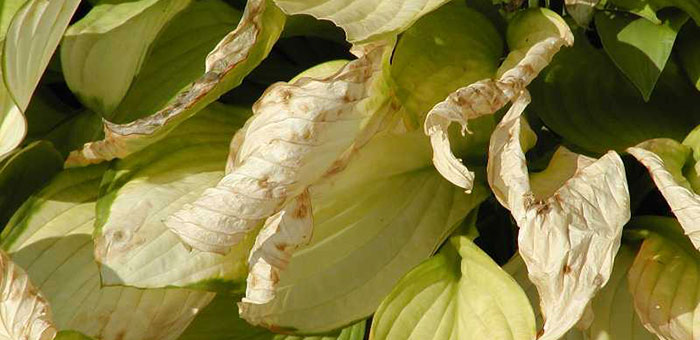
Too little or too much sunlight
Vegetables generally need six to eight hours of full sun, but leafy vegetables, such as kale, can tolerate less sunlight, according to the University of Illinois. Fruiting vegetables require eight hours of sunlight, root vegetables require six hours, and leafy greens require four hours. Adding a few more hours of sunlight improves quality and production of a vegetable. Insufficient sunlight will stunt plant growth. Vegetables in need of sunlight will also grow toward light sources, making them tall and spindly plants.
While sunlight benefits vegetables, excessive sunlight may damage certain vegetables. Leafy greens are susceptible to long periods of sunlight, which cause them to seed and become bitter and inedible. For cool season crops growing in warmer temperatures, afternoon shade becomes necessary, according to Lisa Hilgenberg, horticulturist at the Chicago Botanic Garden. Newly transplanted vegetables are also prone to sun scalding. Gradual acclimation from the greenhouse to the outdoors will protect the transplant.
Shade cloth draped over structured hoops, which allows air to move between plants, will shelter vegetables from the sun. Locating leafy greens and cool season plants in areas that receive afternoon shade is also beneficial. Hilgenberg recommends planting vegetable gardens in north to south rows. Taller plants should grow on the north side and smaller plants on the south side to take advantage of the pattern of the sun.

Heat waves
Extreme heat quickens water loss in plants. Leaves dry out while plants lose their flowers and buds if they lack adequate moisture. Gardeners should use a drip irrigation system in hot weather instead of overhead sprinklers. Drip systems distribute water directly into the soil while sprinklers allow most of the water to evaporate. If sprinklers are the only option, irrigating vegetables in the early morning or early evening gives plants the most time to absorb water.
Top soil also loses water quickly, but a few inches of mulch will lock moisture in the ground and keep plant roots cool, according to the University of Illinois. Gardeners may also apply grass clippings, dried leaves, pine needles, or straw in thin, quarter-inch layers as mulch. They can also use black or plastic mulch at the beginning of the summer for vine crops, such as tomatoes, in cooler areas. Applying plastic mulch in the middle of the summer will trap too much heat, but grown plants’ leaves can block plastic mulch from direct sunlight.
Some vegetables, such as quinoa and lettuce, are affected by extreme humidity, according to Hilgenberg. Lettuce tends to rot if it receives too much moisture. Quinoa thrives in arid conditions at high elevation, but the horticulturalists are trying to adapt quinoa to the Midwestern climate.

Freezes and extreme cold
Severe temperature drops often kill new plants after they set their buds while established plants can recover. Extreme cold may stop plants from producing during the growing season. To prevent this disruption, keep the soil moist to retain heat over a cold night. Cloth sheets, black plastic, or quilts keep vegetables a few degrees warmer and protect them from frost. Gardeners can also sprinkle wheat straw and pine straw over vegetables on a cold day, but must remove the straw when the temperature rises. Sawdust can protect seedlings, but can be used only once since removal involves blowing the sawdust away.
When the weather warms up again, plants must have sufficient and unfrozen water in their soil. Major pruning should occur after the vegetable begins to sprout again, but gardeners can remove any dead, brown foliage immediately.

Flooding and too much rain
Soil sodden with too much rain or water will starve plants of oxygen over an extended period of time. Waterlogged vegetables also have higher chances of developing diseases. If flooding lasts less than two days, plants have a decent chance of recovery, but a prolonged period of waterlogging will damage their roots. Planting in well-drained soil will help some excess water trickle away. In frequently flooded areas, farmers can install drainage pipes or tiles to remove water from the roots. Raised plots and beds also prevent water from pooling in a garden.
According to the University of Delaware, flooding leaches nitrogen from the soil causing vegetables to lack adequate nitrogen, necessary for plant growth. Cultivating the soil after a flood will open up passageways for oxygen and adding nitrogen to the soil will supply vegetables with the necessary nutrients.

Strong winds
Wind pollinates such fruiting vegetables as melons and tomatoes, but too much wind can damage plants. Rooftop gardens often experience stronger winds that knock over or tear vegetables. Wind also quickens the loss of moisture. To protect cultivated vegetables, avoid planting in areas affected directly by wind and seek garden beds close to shelter from the wind. Installing a windbreak also protects more vulnerable plants.
For such expansive vegetables as tomatoes, farmers can grow them horizontally instead of vertically. Tomato plants can expand on straw beds or low trellises that angle away from the wind instead of vertical cages or stakes. If gardeners must use stakes, Hilgenberg recommends that they stake their vegetables early at the time of planting and check on the stakes frequently.
To protect staked tomatoes, Jeanne Nolan will add tall metal supports to make sure the tomato cage does not blow over in the wind.


